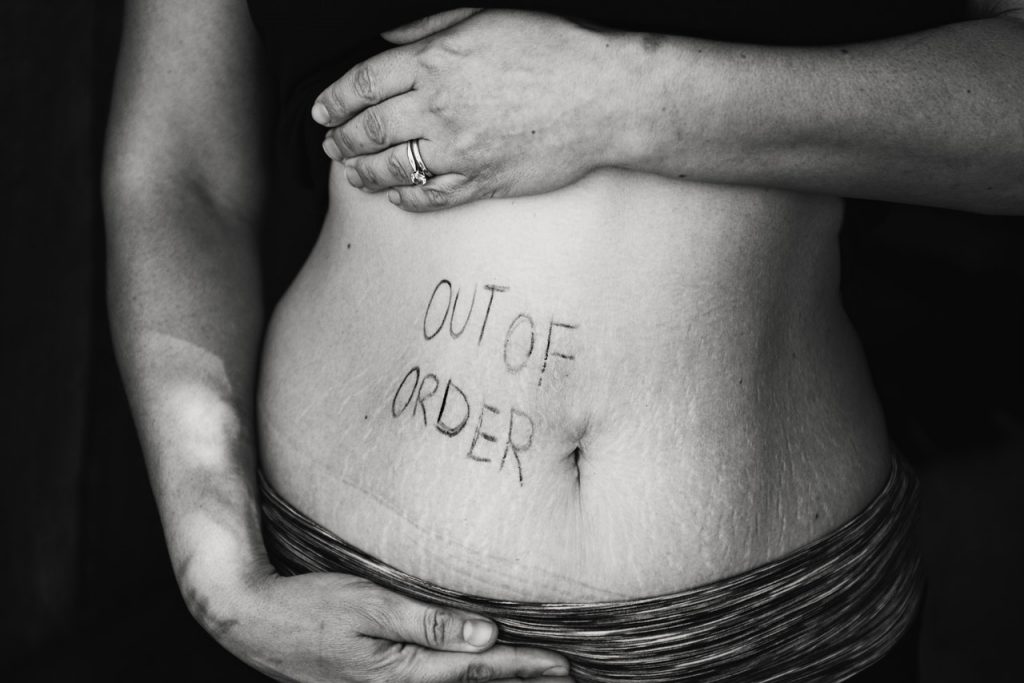

Supported by Science
Why Did Weight Become the Scapegoat for Health Issues?
Why Did Weight Become
the Scapegoat for Health Issues?

“In 2013, two high-profile reports were published,” says Sabrina Strings, PhD. “One claimed obesity was far deadlier than we realized. And the other claimed it was actually more benign. The same year, respected journals, wildly divergent findings—that should tell us that the relationship between weight and health is not so easily classified as people want us to believe.”
When the associate professor of sociology at the University of California, Irvine examined current assumptions around body fat, she found them to be overly simplistic and lacking in evidence. For example, there are numerous examples of what the medical establishment calls overweight or obesity being associated with better health outcomes compared to underweight or normal weight. And an examination of 17 million health records revealed that the increased risk of dying from COVID-19 among Black people is not explained by obesity or diabetes. In her book, Fearing the Black Body, Strings shows how slavery and racism have shaped common views of body fat and its health consequences. Her work underscores why it’s imperative that poor health outcomes are traced to their structural and social roots and not blamed on individual choices.
A Q&A with Sabrina Strings, PhD
When I first started doing this work, I thought there must have been something strange that took place between Marilyn Monroe and Twiggy. What could explain the fact that Marilyn Monroe was prized for being curvaceous, but Twiggy was vaunted for being ultrasvelte? As I started doing research into the topic, I realized that this was a much older phenomenon. What I found originally by looking in women’s magazines was that White women in the late nineteenth century were very open in describing being tall and slender as being an appropriate Anglo-Saxon Protestant aesthetic—that it showed racial superiority because it meant they didn’t overeat.
When I decided to research this further, I wanted to go back to the time period in Western history when curvaceous physiques were valorized generally—the Renaissance. We’ve all seen the painting The Three Graces by Peter Paul Rubens and other paintings by him and by Titian. But by the nineteenth century, there was a new aesthetic. And what I found in my research was that it was the rise of slavery and race science that proved critical in the reimagination of figures. In the Renaissance, artists sometimes painted Black women, depicting them as voluptuous, and people considered them physically desirable.
However, with the rise of the slave trade, there was a new desire to think about qualities that separated White and Black. White people wanted to create differences in order to justify the racial hierarchy in which White people were free and Black people were slaves. White people thought one of the reasons why Black people were better under slavery was that they needed the kind of guidance and management that Europeans could provide. Black people were thought to be overly sensuous, to love sex, and to love food, and they were more obese. Eating and body size became integral to the understanding of Whiteness and Blackness.
We live in a country that has a mythology of pulling yourself up by your bootstraps. The idea is that if a person is healthy, it’s because they did good. If they’re wealthy, it’s because they’ve worked hard. And if they’re happy, it’s because they’ve put in the effort in to be positive individuals. We have this very problematic discourse of individual success and failure. So it’s easy for individuals to blame others’ health outcomes on weight.
The wrongheaded thinking is that if people knew how to manage themselves better, they’d be thin and healthy. These ideas hide the racist legacy of fat phobia. Having high stress or living in a place with environmental toxins or living in a place that has tremendous police surveillance are stressors that can contribute to weight gain. And it’s these stressors that are causing the negative health outcomes. But given the racist history, it’s much easier to ignore the stressors, ignore the social factors, and just look at the individual. The individual is fat, and therefore the fat must be the cause and not the social factors.
In 2013, two high-profile reports were published. One claimed obesity was far deadlier than we realized. And the other claimed it was actually more benign. The same year, respected journals, wildly divergent findings—that should tell us that the relationship between weight and health is not so easily classified as some people want us to believe. Nevertheless, there was all of this positive press for the report that claimed that obesity was deadly—it was in all of the major sources: ABC, Fox News, CNN.
But the report that suggested that obesity can be benign was rarely covered by major news sources. And when it was, it was with skepticism. High-profile scholars in the field of public health came out against this study and organized a symposium against it. So of two studies by scholars in the field of public health, the one from a relative novice claiming obesity was deadly got all the press. The other was by Katherine Flegal, who had been doing this kind of research for many years: Her work was derided or ignored. [Editor’s note: Katharine Flegal is an epidemiologist formerly at the Centers for Disease Control and Prevention, currently at the Stanford Prevention Research Center.]
It is an easy explanation. It’s an explanation that people have used for years. According to the CDC, about 42 percent of White Americans are obese, and about 49 percent of Black Americans are. It’s a minor divergence of seven percentage points. And yet it becomes a mechanism for claiming that the extreme differences we see between White and Black populations in their health outcomes have to do with their weight. People want to rely on weight because there’s been a 200-year legacy of claiming that weight is somehow an index of race and inferiority.
While the disparity between White Americans and Black Americans is only seven percentage points in terms of obesity, the disparities in rates of severe complications and fatalities from diabetes, heart disease, cancer, and especially COVID are astronomically divergent. It can be upwards of 100 percent for many illnesses like diabetes; with COVID, new data show Black people are 3.6 times as likely to die as White people. Medical researchers have yet to explain how this small disparity in so-called obesity is leading to all of these ramifications for Black people.
Obesity is assessed by measuring weight and height and plugging them into a formula called the body mass index. The BMI is an absolutely flawed tool. BMI is not capable of measuring muscularity or even weight distribution—it looks only at the total body mass. It misses the fact that a person who carries more weight in their thighs and hips tends to be healthier than a person who carries weight in their waist. There are different factors that contribute to the relationship between weight and health. Bone and muscle weigh more than fat, and Black women tend to be more muscular and have higher bone density than White women. This can explain why Black women tend to be healthier at heavier weights.
When we’re looking at what’s happening in Black communities, what we’re seeing is that there are high rates of incarceration. There are high rates of racial profiling. There are high levels of environmental toxins. There’s lack of access to clean drinking water. People aren’t getting enough sleep. They don’t have childcare. They don’t have neighborhood grocery stores. All of these social and structural factors are impeding people’s health outcomes. And they’re relatively obvious.
If a person is living in a community that doesn’t have a grocery store in walking distance and the nearest place where they can get food is not a farmers’ market but a convenience store, we might expect that they’re not going to have access to the healthiest options. And it’s not enough to say they could just drive or take a bus to a Whole Foods, because sometimes healthy options are multiple neighborhoods away. How is it that we have the expectation that people who may not have a car or may not be able to afford public transportation would be able to go grocery shopping at this far-away and expensive store?
There are all of these ways in which communities of color have been disenfranchised and don’t have access to the kinds of middle-class mores that we’re trying to impose upon them of eating healthily and exercising regularly. And yet when we see that they’re not doing it rather than looking at the context in which people are living, we often just want to look at their individual bodies and say, well, you should simply do better. That’s just the neoliberal environment that we live in.
I don’t see how we can fully eradicate one form of oppression without the others. We’d need to undo structural racism to end the health disparities that are continuously blamed on obesity.
Sabrina Strings, PhD, is an associate professor of sociology at the University of California, Irvine and the author of Fearing the Black Body: The Racial Origins of Fat Phobia. Strings contributed an opinion story to The New York Times titled “It’s Not Obesity. It’s Slavery.” With Lindo Bacon, she coauthored “The Racist Roots of Fighting Obesity,” published in Scientific American. Strings received a BA with high honors in psychology from University of California, Berkeley and an MA and PhD in sociology from the University of California, San Diego.
This article is for informational purposes only. It is not, nor is it intended to be, a substitute for professional medical advice, diagnosis, or treatment and should never be relied upon for specific medical advice. To the extent that this article features the advice of physicians or medical practitioners, the views expressed are the views of the cited expert and do not necessarily represent the views of goop.
We hope you enjoy the book recommended here. Our goal is to suggest only things we love and think you might, as well. We also like transparency, so, full disclosure: We may collect a share of sales or other compensation if you purchase through the external links on this page.



